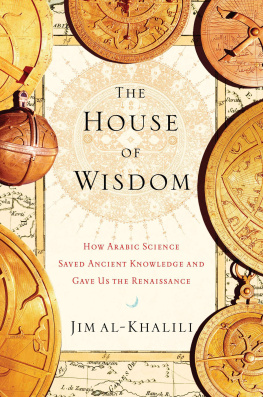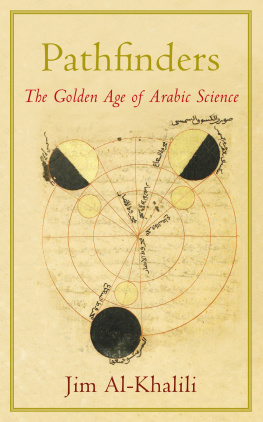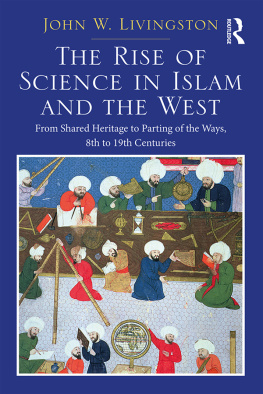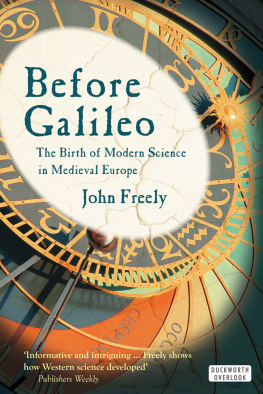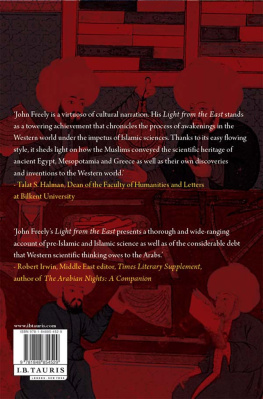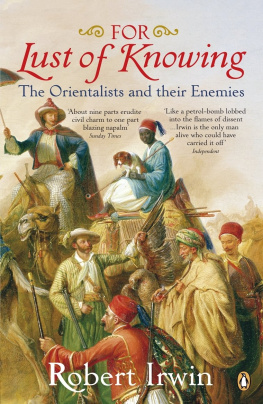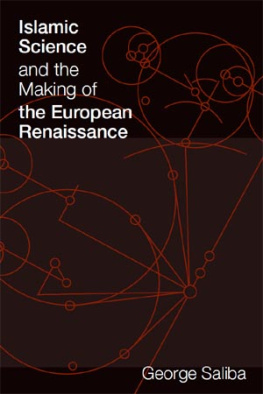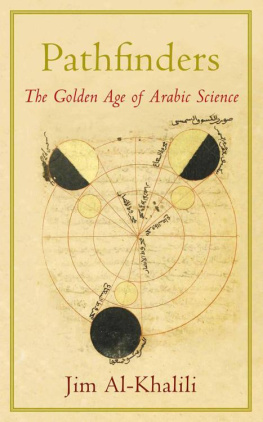Al-Khalili - The House of Wisdom: How Arabic Science Saved Ancient Knowledge and Gave Us the Renaissance
Here you can read online Al-Khalili - The House of Wisdom: How Arabic Science Saved Ancient Knowledge and Gave Us the Renaissance full text of the book (entire story) in english for free. Download pdf and epub, get meaning, cover and reviews about this ebook. year: 2011, publisher: Penguin Books, genre: Non-fiction. Description of the work, (preface) as well as reviews are available. Best literature library LitArk.com created for fans of good reading and offers a wide selection of genres:
Romance novel
Science fiction
Adventure
Detective
Science
History
Home and family
Prose
Art
Politics
Computer
Non-fiction
Religion
Business
Children
Humor
Choose a favorite category and find really read worthwhile books. Enjoy immersion in the world of imagination, feel the emotions of the characters or learn something new for yourself, make an fascinating discovery.
- Book:The House of Wisdom: How Arabic Science Saved Ancient Knowledge and Gave Us the Renaissance
- Author:
- Publisher:Penguin Books
- Genre:
- Year:2011
- Rating:5 / 5
- Favourites:Add to favourites
- Your mark:
The House of Wisdom: How Arabic Science Saved Ancient Knowledge and Gave Us the Renaissance: summary, description and annotation
We offer to read an annotation, description, summary or preface (depends on what the author of the book "The House of Wisdom: How Arabic Science Saved Ancient Knowledge and Gave Us the Renaissance" wrote himself). If you haven't found the necessary information about the book — write in the comments, we will try to find it.
A myth-shattering view of the medieval Islamic worlds myriad scientific innovations, which preceded-and enabled-the European Renaissance.
The Arabic legacy of science and philosophy has long been hidden from the West. British-Iraqi physicist Jim Al-Khalili unveils that legacy to fascinating effect by returning to its roots in the hubs of Arab innovation that would advance science and jump-start the European Renaissance. Inspired by the Koranic injunction to study closely all of Gods works, rulers throughout the Islamic world funded armies of scholars who gathered and translated Persian, Sanskrit, and Greek texts. From the ninth through the fourteenth centuries, these scholars built upon those foundations a scientific revolution that bridged the one-thousand-year gap between the ancient Greeks and the European Renaissance.
Many of the innovations that we think of as hallmarks of Western science were actually the result of Arab ingenuity: Astronomers laid the foundations for the heliocentric model of the solar system long before Copernicus; physicians accurately described blood circulation and the inner workings of the eye ages before Europeans solved those mysteries; physicists made discoveries that laid the foundation for Newtons theories of optics. But the most significant legacy of Middle Eastern science was its evidence-based approach-the lack of which kept Europeans in the dark throughout the Dark Ages. The father of this experimental approach to science-what we call the scientific method-was an Iraqi physicist who applied it centuries before Europeans first dabbled in it. Al-Khalili details not only how discoveries like these were made, but also how they changed European minds and how they were ultimately obscured by later Western versions of the same principles.
With transporting detail, Al-Khalili places the reader in the intellectual and cultural hothouses of the Arab Enlightenment: the House of Wisdom in Baghdad, one of the worlds greatest academies, the holy city of Isfahan, the melting pots of Damascus and Cairo, and the embattled Islamic outposts of Spain.
Al-Khalili tackles two tantalizing questions: Why did the Arab world enter its own Dark Age after such a dazzling enlightenment? And how much did Arabic learning contribute to making the Western world as we know it? Given his singular combination of expertise in both the Western and Middle Eastern scientific traditions, Al-Khalili is uniquely qualified to solve those riddles.
Formats : EPUBAl-Khalili: author's other books
Who wrote The House of Wisdom: How Arabic Science Saved Ancient Knowledge and Gave Us the Renaissance? Find out the surname, the name of the author of the book and a list of all author's works by series.

